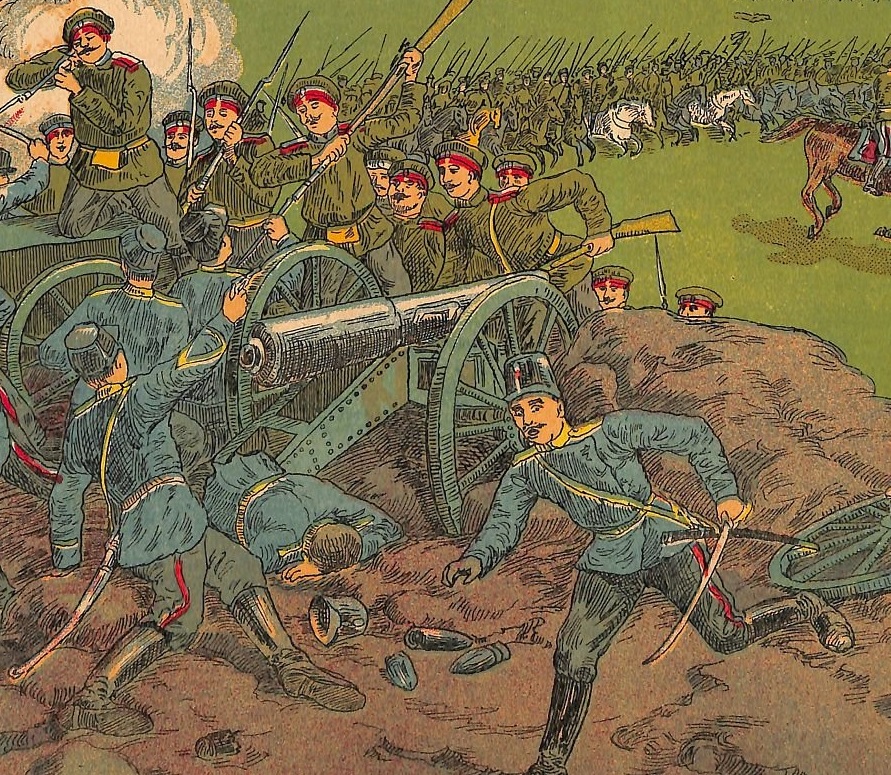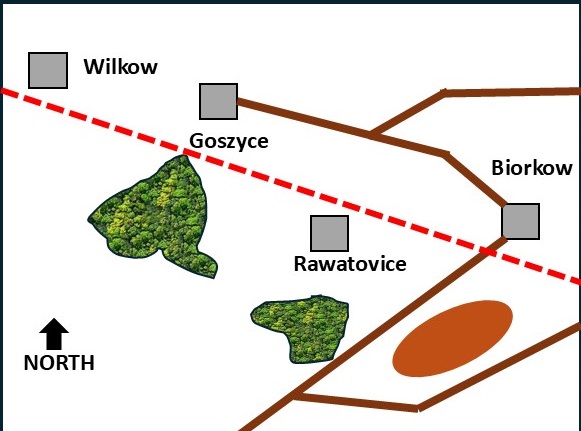Counter-Attack at Goszyce: Krakow, 1914
A Scenario for Der Grosse Krieg


Directive on November 18th to Central Powers forces:
It is November 18, 1914, and the Russian have reclaimed almost all the territory earlier lost in Poland. They are now getting ready for a thrust into Silesia, but in order to do this they must take Krakow. They make a major push, but by November 16th, progress has slowed, and on the 17th and 18th the Austro-Hungarians and Germans go on the counter-offensive. The Austro-Hungarian 4th Army is deployed around Krakow, fighting against the Russian 9th Army.
Historically, the Austro-Hungarians are not able to gain more than 400 yards in the first of many days of attacks, running headlong into the Guard on the 17th, and making only marginal gains on the 18th. (The Germans fare considerably better.)
The challenge for the Austrians here is to beat their historical performance. November 18 did mark a turning point in the fighting, however, as the Russians lost their numerical superiority and consequently the initiative. But it was the beginning of a slow, attritional fight which would not produce a decisive result. (The fighting at Krakow ended as a result of the German defeat in the Battle of Lodz in early December - although a Russian victory, it resulted in the cancellation of plans to invade Germany.)
This scenario depicts the push by elements of the 13th Landwehr Infantry Division and the 106th Landsturm Division against parts of the Russian 46th Division amd 3rd Grenadier Division around the town of Goszyce, to the northeast of Krakow, which is typical of many of the counter-attacks attempted by the Austro-Hungarians. The terrain is fairly flat, dotted with small woods and villages. The Austro-Hungarians do not really have enough troops to be attacking against the Russians, but they only need to do better than what they did historically to gain a minor victory.
This scenario is intended for remote play with 28mm miniatures, so all distances are doubled.
The map below depicts a 4' x 5' table. All of the woods are rough and provide soft cover. The hill is a gentle, grassy ridge which blocks LOS but does not impede movement or provide cover in combat, unless artillery is behind the "military crest" (runs NE - SW) for soft cover protection. The towns all provide hard cover for up to a single unit.

Russians must set up on or north of the dotted red line. Austro-Hungarians will move onto the southern edge of the table, and will have the first move of the game.
Overall Commander: FML. Eduard Edler von Kreysa
Landsturm Brigade (106th Landsturm Division)
Brigade Commander: GM. Carl Czapp
6 Landsturm Battalions: Each 4 bases Reservist Infantry (Landsturm Rgts. 25 and 38)
2 Field Artillery Batteries: Each 1 base Field Guns
26 Landwehr Inf Brigade (13th Landwehr Division)
Brigade Commander: GM. Karl Englert
9 Infantry Battalions: Each 4 bases Average Infantry (Landwehr Infantry Rgts. 1, 14, and 25)
1 Battalion Feldjager: 4 bases Veteran Infantry (from Kaiser Jager Rgt. 2, attached from 3rd ID)
3 MG Companies: Each 1 base Machine Guns
3 Field Artillery Batteries Each 1 base Field Guns
Overall Commander: General Alexander Ragoza
2 Grenadier Battalions: Each 4 bases Veteran Infantry (12th Astrakhan Grenadier Rgt., 3rd Grenadier Division)
1 MG Company: 1 base Machine Guns
1 Field Artillery Battery: 1 base Field Guns
Infantry Brigade (46th Infantry Division):
Brigade Commander: General Kisielewski
8 Infantry Battalions Each 4 bases Average Infantry (181st and 182nd Infantry Rgts.)
2 MG Companies: Each 1 base Machine Guns
3 Field Artillery Batteries: Each 1 base Field Guns
The game will play for no more than 12 turns, or until one player concedes.
Victory is determined by which side has amassed the most points when play ends: